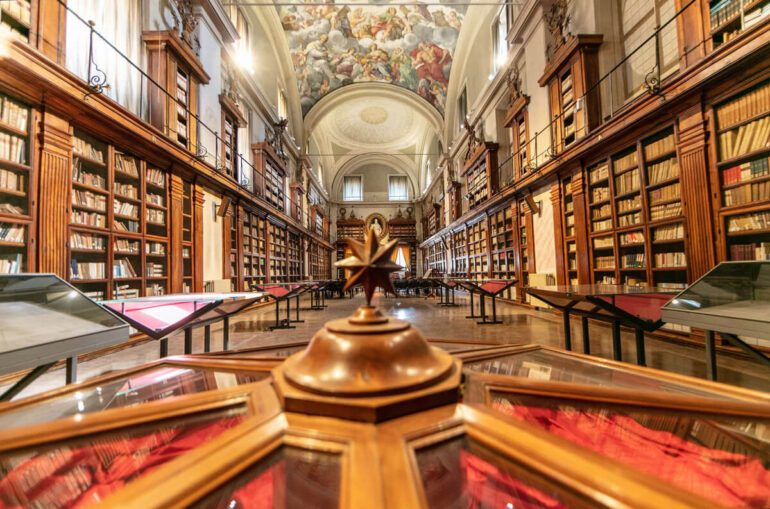The hidden, and most beautiful, libraries of Rome
Whether it’s to research, study, visit or soak up into Italy’s culture and history, visiting one of the capital’s libraries should be on your to-do list. Below you’ll find some of our favorite libraries in Rome.
RECOMMENDED:
Best Bookshops in Rome
Best cafès to work in
Vatican Library (Biblioteca apostolica vaticana)
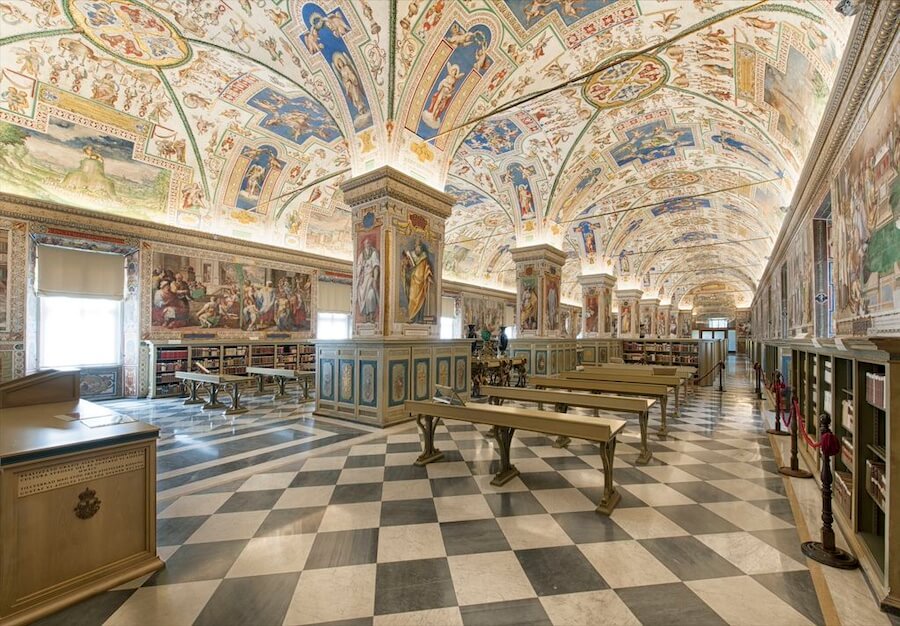
One of the oldest libraries in the world, it was officially established in 1475 but its priceless collection has been around for much longer. As well as being the papacy’s theological storehouse, the Vatican Library contains key secular texts and was central to the revival of classical Greek and Roman culture during the Renaissance. Just some of the innumerable (known) treasures include Henry VIII’s love letters, one of the 50 bibles custom-made for Emperor Constantine (the first Christian Roman leader), and ancient Chinese manuscripts. Among its collection, the Vatican Library currently has over 180,000 manuscripts and over 1,600,000 printed books. The library is typically not open to undergraduates or high school students. However, you can acquire a short-term pass with the appropriate documents.
Angelica Library (Biblioteca Angelica)
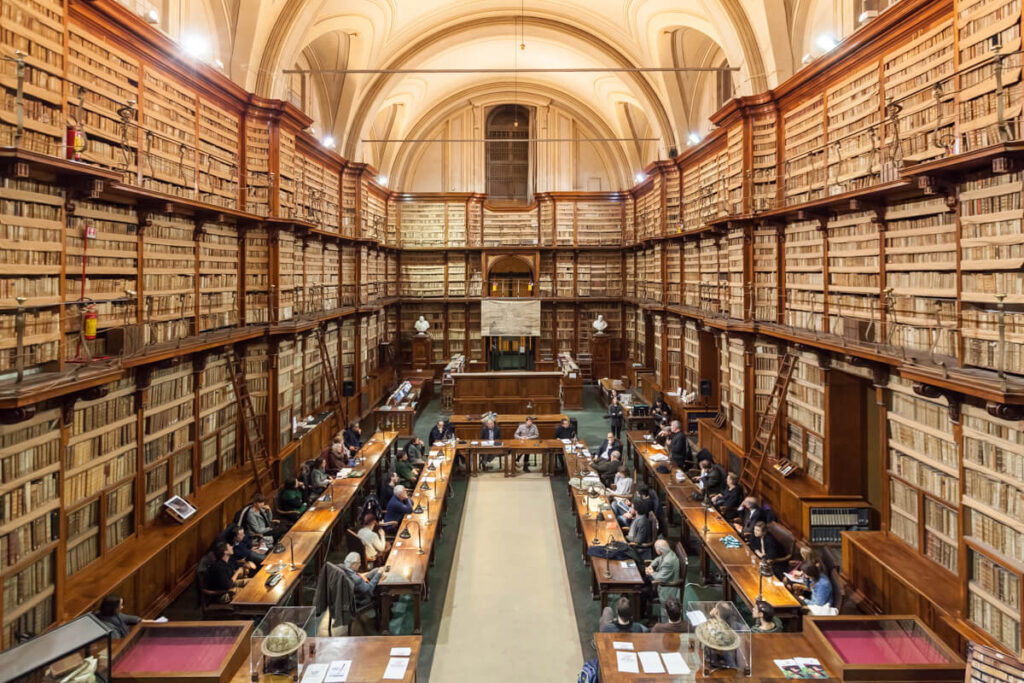
Established in 1604 by the Augustinian bishop Angelo Rocca, it was first opened to the public in 1609. The Angelica library is near Piazza Navona and holds around 120,000 manuscripts. Many of these works are key documents on the Reformation and Counter-Reformation. Other assets include Bibles, 2,700 Latin, Greek and Oriental volumes, plus Italian literature and theatre from the 15th to 18th centuries. Some highlights are rare editions of works by Dante, Petrarch, and Boccaccio. Open to anyone 16 years and older with valid documentation.
INSPIRATION
Best Bookshops in Rome
Vallicelliana Library (Biblioteca Vallicelliana)
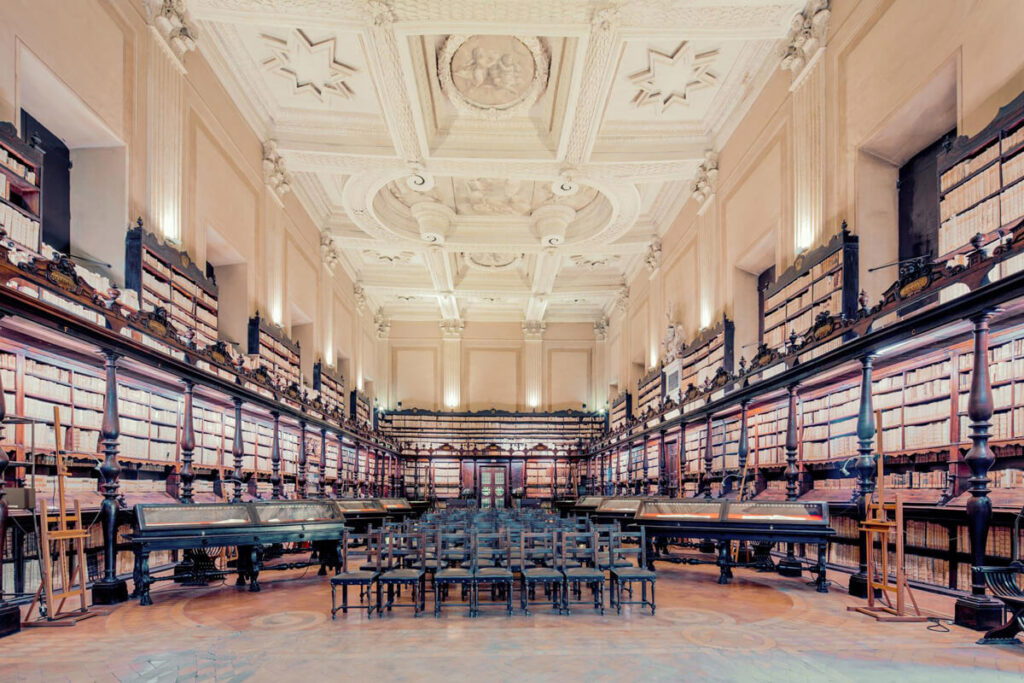
The Vallicelliana Library is a gorgeous Baroque library, founded in 1565 by an Italian priest called Filippo Neri. The collection of around 130,000 volumes, including vellum-bound wonders, is primarily made up of religious works documenting the Reformation and the Counterreformation and medieval history. There is also a small but notable collection of texts related to music and a collection of photographs. Open to anyone 16 years and older with valid documentation.
The Library of the Senate (Biblioteca del Senato)
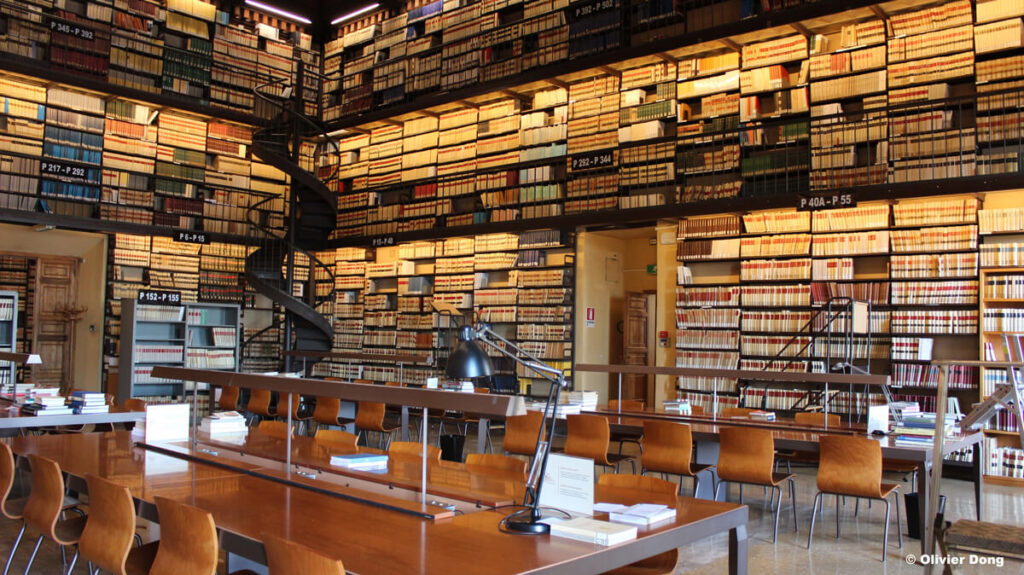
The library of the Senate opened its doors to the public in 2003. It provides a wealth of about 700,000 volumes, about 3,000 periodicals and 600 Italian and foreign newspapers, the most important collection of Statutes of Municipalities and corporations from the late Middle Ages to the contemporary age, ancient editions of Common and Canon Law, one of the richest collections of 19th century periodicals and much more. The library is open to anyone 16 years and older with valid documentation after having filled in a form.
The Library of the National Academy of Science/Lincean Academy (Accademia Nazionale dei Lincei e Corsiniana)
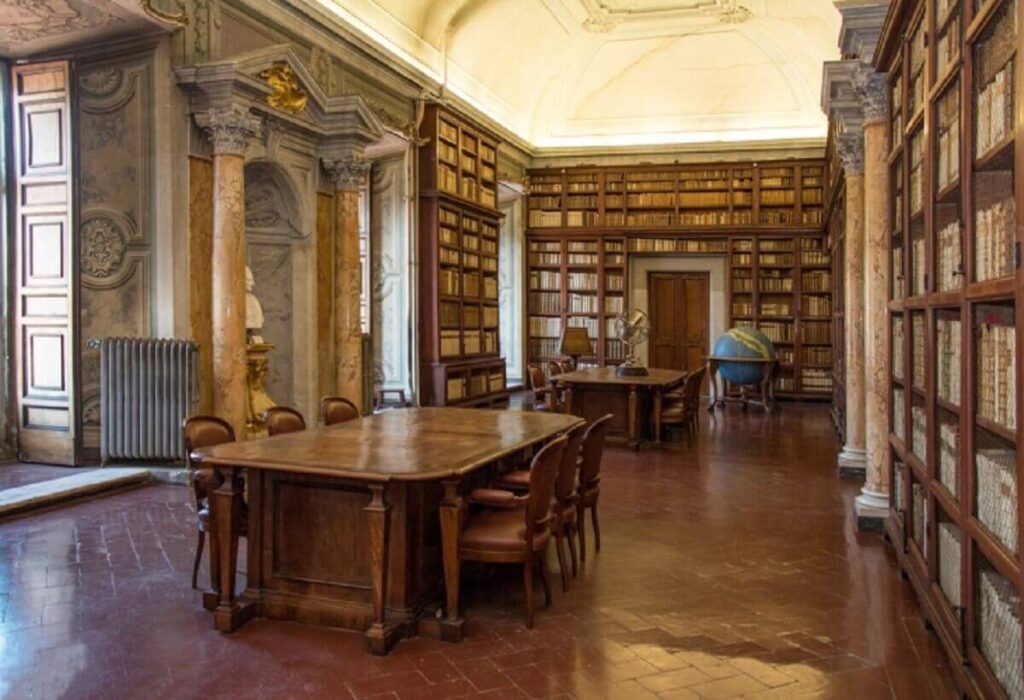
Galileo Galilei himself was once a member of this prestigious academy. The Lincean Academy was founded in 1603 by Federico Cesi and then revived in the 1870s. The Academy’s library was conceived as the meeting place of scholars from all disciplines and its catalogue ranges from works on philosophy, mathematics, architecture, astronomy, oriental philosophies, geography, philology, ancient and modern literature as well as alchemic and hermetic studies. The library is located at Palazzo Corsini, which backs onto the Botanical Gardens and is a Baroque palace built between 1730 and 1740. This library hosts regular conferences on scientific, historical, and fiscal subjects.
INSPIRATION
Best Cafés To Work In Rome
Alessandrina University Library (Biblioteca Universitaria Alessandrina)
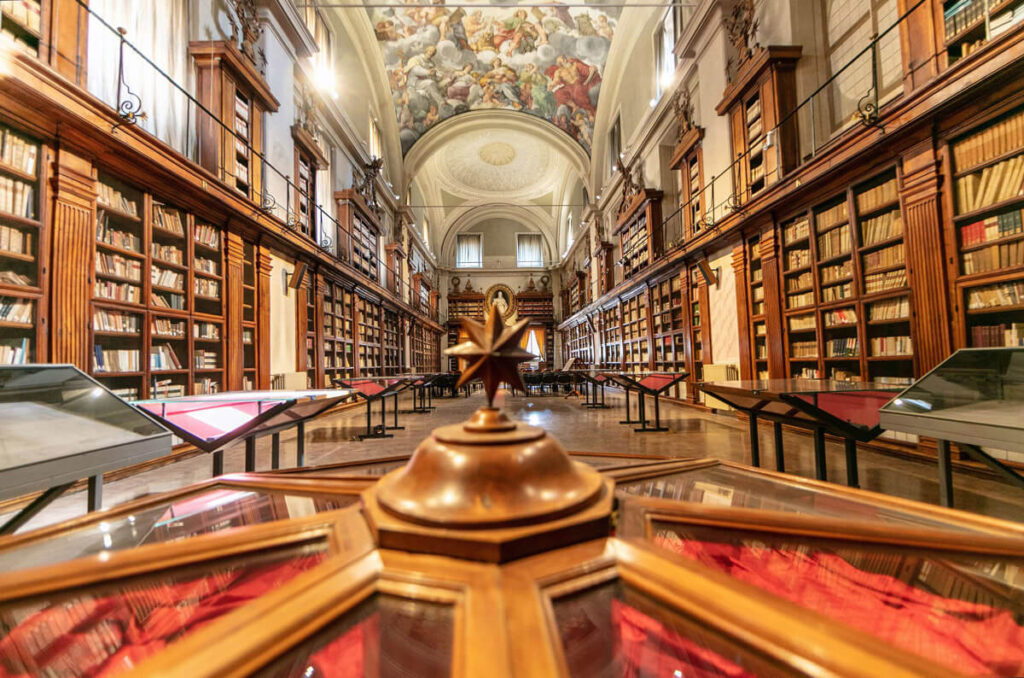
The Alessandrina University Library is a historic library established in 1667 by Pope Alexander VII as the library of the Studium Urbis, the University of Rome. In 1935, the University was relocated from the historic Palazzo della Sapienza to the new Città Universitaria, with the library situated behind the Rectorate. The Alessandrina Library boasts a collection of over 1,000,000 printed volumes and pamphlets. Additionally, it houses 452 manuscripts along with numerous autographs and correspondences.
Library of the National Institute of Archaeology and the History of Art (Biblioteca di archeologia e storia dell’arte)
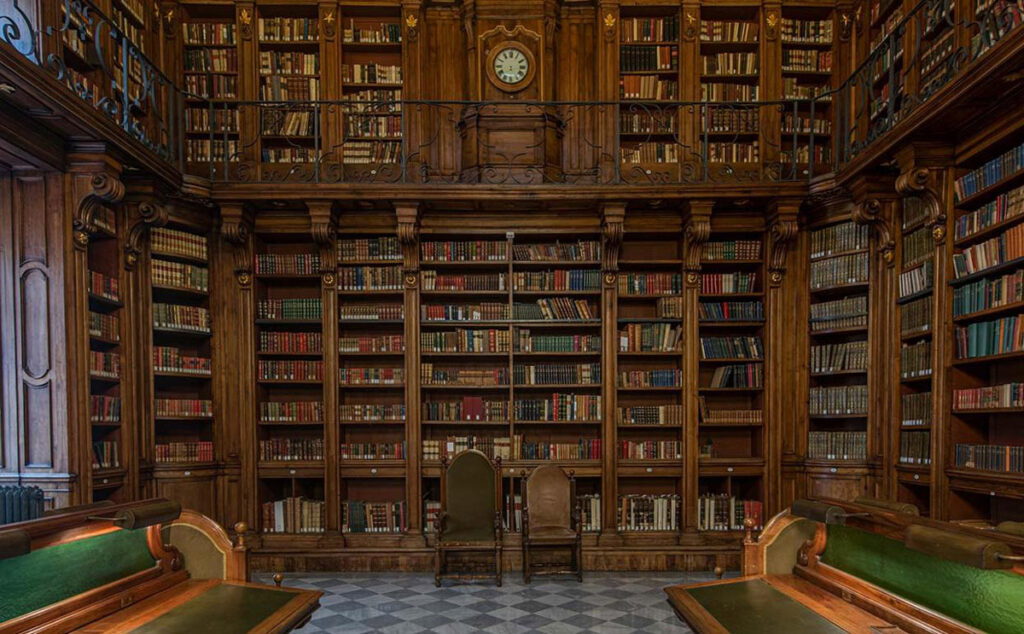
A national public library located in two spots: the main library is in the elegant Barbo and Lanciani rooms of Palazzo Venezia, with a smaller branch at the Sala della Crociera del Collegio Romano. This library is the largest in Italy focused on art and archaeology. The catalogue includes more than 370.000 books, with many graphic examples and rare manuscripts dating back to the 16th and the 17th centuries. The collection was assigned to the National Institute for Archaeology and the History of Art at Palazzo Venezia in 1922.
Casanata Library (Biblioteca Casanatense)
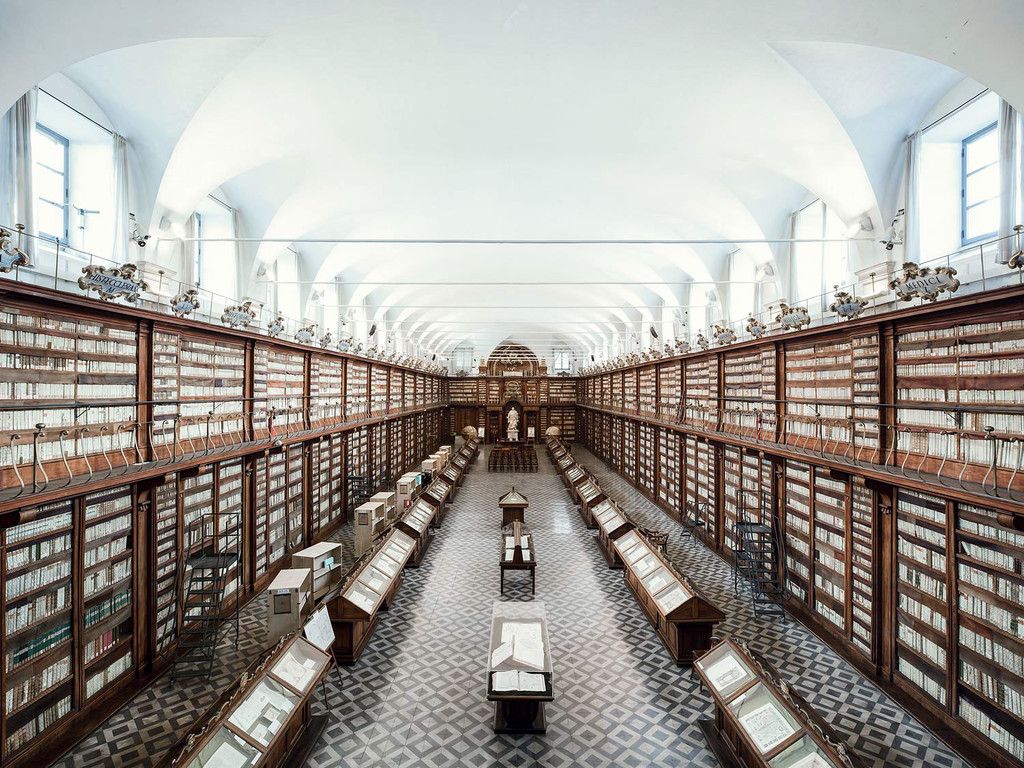
The Dominican cardinal Girolamo Casanata opened this library to the general public in 1701. Since 1870, however, the Italian government has administered the library. The original catalogue was around 25,000 volumes and donated by Casanata to the Dominican convent of Santa Maria sopra Minerva along with a large endowment fund for the purchase new books. Amongst the library’s possessions are Greek and Hebrew texts, Roman governmental proclamations, and comedies of the 17th and 18th centuries.
The Herzitania Library/Max Planck Institute for Art History (Biblioteca Hertziana)
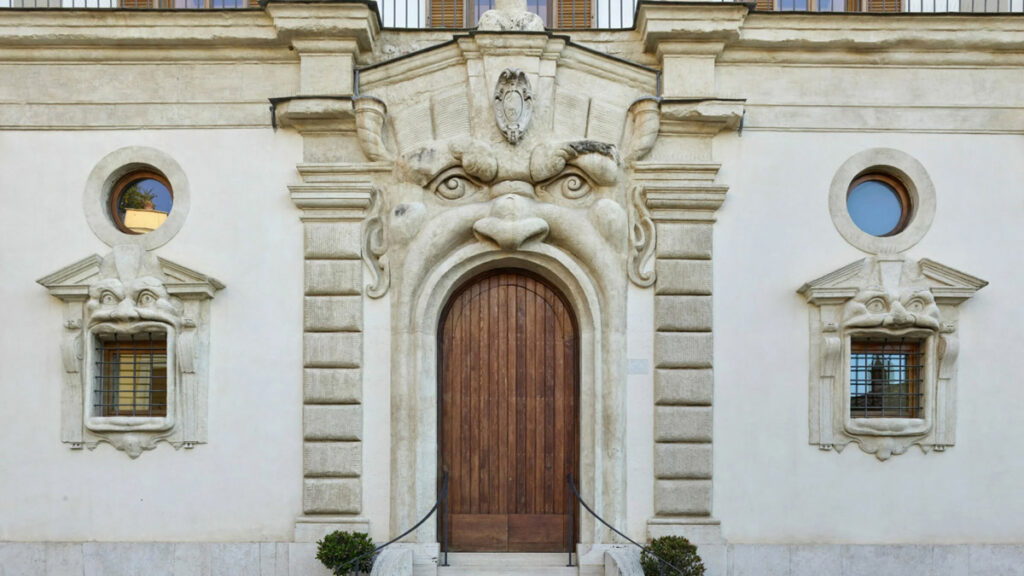
Located just near the fabulous Spanish Steps, the revamped library exists thanks to the art-lover and German philanthropist Henriette Hertz (1846–1913), who originally donated the Renaissance Palazzo Zuccari – along with a well-stocked catalogue – as a home for the Max Planck research institute. Hertz created a foundation dedicated to “the study of art and culture, from the Renaissance on[wards]…especially in relation to Rome as the nucleus of European culture.” Her vision also encompassed a meeting place for world art scholars. The institute’s mission is to support and promote future art historians…and what a beautiful spot to do just that.
Candidates must have at least a Ph.D. degree in History of Art or Architecture. In exceptional cases Ph.D. students can be granted temporary admission if they present a letter of recommendation from their academic supervisor and a brief summary of their research project
Luigi Chiarini Library (Biblioteca Luigi Chiarini)
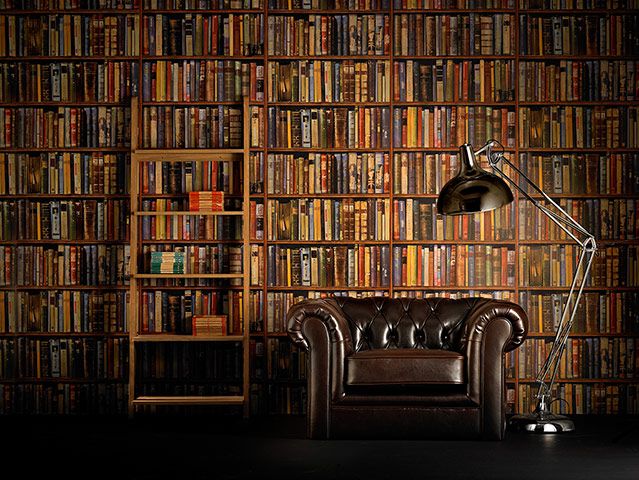
Founded in 1935, the Chiarini Library is the largest film-specialised facility in Italy. Founded in 1935 as part of the Centro Sperimentale di Cinematografia, it currently has about 155,000 bibliography and archival units and has gradually transformed from a place of conservation to a research and documentation center. Reservation is mandatory via e-mail biblioteca@fondazionecsc.it.
As for some modern public places to be bookish, you could explore one of the many foreign cultural academies and institutes, such as the American Academy or the British School, for example. Finally, not far from Termini Station there is also the National Central Library of Rome (Biblioteca Nazionale Centrale di Roma) on Viale Castro Pretorio (open Mon-Thurs 8.30am to 7pm and Fri 8.30am-2.30pm), which is all very new and shiny.


